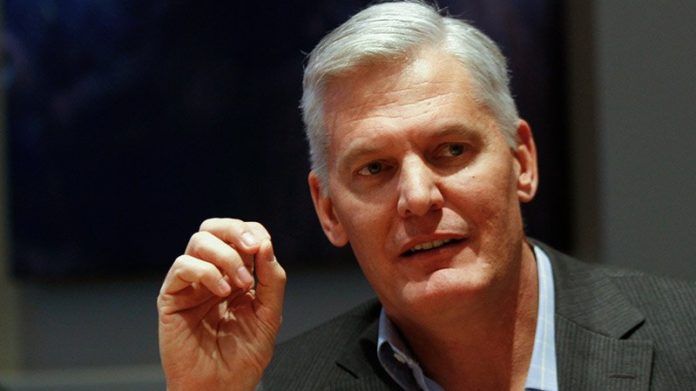
SOUTH African power utility, Eskom, says it will announce a strategy to manage debt before the year-end which may include ‘green finance’ which would become available as it shifts away from a reliance on coal.
Eskom CEO, Andre De Ruyter, said at an annual results presentation that an estimated R200bn of green finance could be tapped. Eskom has R480bn in gross debt costing R1bn a week in interest.
But he made it clear that any solution would not involve asking creditors for a reduction in the debt, which Eskom is unable to finance without government support. Net finance costs of R37bn in the financial year end-March tipped Eskom’s balance sheet into a bottom line loss of R20.5bn – the third annual loss in a row.
“We do not intend to restructure the debt – restructuring has a very specific meaning in the corporate finance world and it tends to alarm lenders,” De Ruyter said.
“That is not what we intend to do; we will honour our debt obligations as and when they fall due. But as our debt matures there is an opportunity to refinance the debt using cheaper and more advantageous financing for Eskom,” he said.
There has been speculation over how the embattled utility will address its debt crisis including a debt-to-equity swap. But further government guarantees are unlikely given the sovereign account has its own problems.
Minister of Public Enterprises, Pravin Gordhan, said at the presentation that a ‘first round’ of work examining the debt options took place early this year, and these were still on the table. A second round of initiatives had emerged from a recent social compact negotiated and signed by business, labour, government and community partners.
Those suggestions would be discussed over the course in the coming week, and “within a month or two” there should be some clarity, he said.
Eskom has insisted more “cost reflective” tariff increases are needed to make it financially viable despite a quadrupling in the tariff in ten years. Gordhan said at Eskom’s presentation the utility could not continue to rely on tariff increases to stabilise its finances because it had an important role to play in terms of lowering the cost of business in South Africa.
“Something extraordinary needs to be done in terms of restructuring the debt, or managing the debt differently, and once those processes are near completion, we can give a little more detail about where we go,” he said.
Gordhan said that to get further support from government, the vertically integrated utility had to first implement a “roadmap” which envisages its division into separate entities for generation, transmission and distribution of electricity. There had to be a “disaggregated” financial report outlining how each of the entities were positioned, he added.
Eskom CFO, Calib Cassim, said that the impact of the Covid-19 pandemic on demand for electricity had hit Eskom’s revenues and would lead to a further deterioration in the utility’s finances during the 2021 financial year. It would only return to profitability by 2023, he added.











